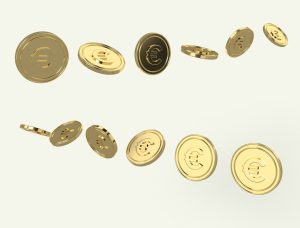Forex trading, also known as foreign exchange trading, is a popular way for individuals and businesses to participate in the global financial market. One of the key concepts to understand when trading Forex is margin, which refers to the amount of collateral required to open and maintain a position.
Margin is calculated based on the total value of the position, as well as the leverage or borrowing power provided by the broker. In this article, we will explore how to calculate margin for Forex trading, including examples and tips for managing margin effectively.
What is Margin in Forex?
Margin is the amount of money required to open and maintain a position in Forex trading. It is essentially a deposit or collateral that the trader must provide to the broker in order to access leverage or borrowing power.
Leverage is a key feature of Forex trading, as it allows traders to control larger positions than they would be able to with their own funds. For example, a trader with a 1:100 leverage ratio could control a $100,000 position with just $1,000 of their own funds.
However, leverage also increases the risk of losses, as any losses will be magnified by the amount of leverage used. Margin is therefore a vital aspect of risk management in Forex trading, as it helps to ensure that traders have sufficient funds to cover potential losses.
How to Calculate Margin in Forex?
Margin is calculated based on the total value of the position, as well as the leverage ratio provided by the broker. The formula for calculating margin is as follows:
Margin = (Lot Size × Contract Size × Opening Price) ÷ Leverage
Lot Size: The lot size refers to the number of units of currency being traded. The standard lot size in Forex trading is 100,000 units, but smaller lot sizes such as mini lots (10,000 units) and micro lots (1,000 units) are also available.
Contract Size: The contract size refers to the value of one lot in the base currency. For example, if the base currency is USD and the contract size is $100,000, then one lot is worth $100,000.
Opening Price: The opening price is the price at which the position is opened.
Leverage: The leverage ratio provided by the broker determines the amount of leverage available to the trader. For example, a leverage ratio of 1:100 means that the trader can control a position of $100,000 with just $1,000 of their own funds.
Let’s take an example to illustrate how to calculate margin in Forex trading:
Suppose that a trader wants to buy one standard lot of EUR/USD at an opening price of 1.2000, with a leverage ratio of 1:100. The contract size for EUR/USD is $100,000.
Lot Size = 1
Contract Size = $100,000
Opening Price = 1.2000
Leverage = 1:100
Margin = (1 × $100,000 × 1.2000) ÷ 100 = $1,200
Therefore, the trader would need to provide $1,200 of collateral to open and maintain the position.
Tips for Managing Margin in Forex Trading
Managing margin effectively is crucial for successful Forex trading, as it helps to control risk and prevent losses from exceeding available funds. Here are some tips for managing margin in Forex trading:
1. Set Stop Losses: Stop losses are orders that automatically close a position when it reaches a certain level of loss. Setting stop losses can help to limit losses and prevent margin calls.
2. Monitor Margin Levels: Traders should regularly monitor their margin levels and ensure that they have sufficient funds to cover potential losses. Margin calls occur when the margin level falls below a certain threshold, and can result in the position being closed automatically.
3. Use Lower Leverage: Although higher leverage can increase potential profits, it also increases the risk of losses. Traders should consider using lower leverage ratios to reduce risk and improve margin management.
4. Diversify Portfolio: Diversifying a portfolio can help to spread risk and reduce the impact of losses on margin. Traders should consider trading multiple currency pairs and using different strategies to diversify their portfolio.
Conclusion
Margin is a vital aspect of Forex trading, as it helps to ensure that traders have sufficient funds to cover potential losses. Calculating margin requires an understanding of the lot size, contract size, opening price, and leverage ratio provided by the broker. Effective margin management involves setting stop losses, monitoring margin levels, using lower leverage, and diversifying the portfolio. By following these tips, traders can manage margin effectively and improve their chances of success in Forex trading.






